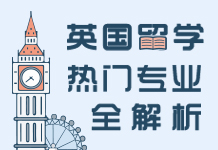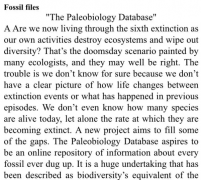2017年3月18日青岛朗阁雅思阅读考试真题回顾及解析
来源:青岛朗阁
浏览:
发布日期:2017-03-20 11:00
摘要:2017年3月18日的雅思阅读考试已经结束了,大家感觉如何呢?这次的雅思阅读考试考了内容?难度怎么样呢?青岛朗阁小编这就为大家送上2017年3月18日的雅思阅读考试真题回顾及解析,希望对大家有所参考~
青岛朗阁雅思阅读老师 王娜
| 考试日期: | 2017年3月18日 |
| Reading Passage 1 | |
| Title: | Design from Nature |
| Question types: |
判断题(7) 填空题(3) 简答题(3) |
| 文章内容回顾 | 文章介绍了仿生技术的应用,制造了仿生机器人,还讲到仿壁虎的脚掌sticky toes做出的动态材料。 |
| 题型难度分析 | 判断题在前几次考试当中出现的频率并不是很高,但是通过这次考试来看,判断题仍是考官出题的一个重点,因此对判断题的掌握仍是备考的一个重点。判断题的技巧性比较强,因此难度不是很大,其他两个题也都是顺序题,总体来说体型的难度不是很高。但是这次考试文章的难度相对来说比较大,因此有部分考生觉得第一篇文章并不是很好做。 |
| 题型技巧分析 |
判断题做题原则: 1)顺序题 2)将判断题目的题干转化成是不是来进行思考,便于判断。 3) FALSE与NOT GIVEN的区分,把选FALSE的选项谓语部分加个not后者否定则变为正确选项。 4)含有正确提示词(表示不确定的词)的题干多为TRUE比如,possible,probable,likely,maybe,might,sometimes,generally speaking,seem to,appear to 5)含有表示绝对含义的错误提示词的题干多为FALSE比如,never,all,always ,fully,largely,every,each,none,impossible only,single,unique,enough,plenty of most ,least,immediately,instant,prompt 含有比较级的题干,多为并不存在的比较关系,选NOT GIVEN的概率比较大,比如,than,more than,less than等等。 |
| 剑桥雅思推荐原文练习 | 剑7 Test1 Passage1 Let’s Go Bats |
| Reading Passage 2 | |
| Title: | Carbolic Smoke Ball Company |
| Question types: |
判断题(4) 填空题(4) 人名观点配对题(4) 选择题(1) |
| 文章内容回顾 | 1889-1890年英国出现了流感,但是制造的smoke ball 声称可以治愈流感,公司在报纸上投放了很多广告,称如果消费者在使用了该产品后仍得了流感,将予以金钱赔偿。一位女士看到了广告,并使用了该产品,但仍得了流感,在经历一系列维权,终于获得赔偿。 |
| 相关英文原文阅读 |
The Carbolic Smoke Ball Company made a product called the “smoke ball”. It claimed to be a cure for influenza and a number of other diseases, in the context of the 1889-189 (flu pandemic( 流行的)(estimated to have killed 1 million people). The bottle was a patented design and the nozzle pair was mental one with the gauze inside which filter the air flux. The smoke ball was a rubber ball with a tube attached. It was filled with carbolic acid(石炭酸)(or phenol). The tube would be inserted into a user’s nose and squeezed at the bottom to release medicine powder (the vapors) hold inside the rubber ball bottle. The nose would run, ostensibly (表面上地)flushing out viral infections. B The Company published advertisements in the Pall Mall Gazette and other newspapers on November 13,189, claiming that it would pay £100 to anyone who got sick with influenza after using its product according to the instructions set out in the advertisement.“£100 reward will be paid by the Carbolic Smoke Ball Company to any person who contracts the increasing epidemic influenza colds, or any disease caused by taking cold, after having used the ball three times daily for two weeks, according to the printed directions supplied with each ball. £1000 is deposited with the Alliance Bank, Regent Street, showing our sincerity in the matter. During the last epidemic of influenza many thousand carbolic smoke balls were sold as preventives against this disease, and in no ascertained case was the disease contracted by those using the carbolic smoke ball. One carbolic smoke ball will last a family several months, making it the cheapest remedy in the world at the price, 10s. post free. The ball can be refilled at a cost of 5s. Address: Carbolic Smoke Ball Company, “27, Princes Street, Hanover Square, London. ” C Mrs. Louisa Elizabeth Cargill saw the advertisement, bought one of the balls and used it three times daily for nearly two months until she contracted the flu on 17 January 1892. She claimed £100 from the Carbolic Smoke Ball Company. They ignored two letters from her husband, a solicitor (律师).On a third request for her reward, they replied with an anonymous letter that if It is used properly the company had complete confidence in the smoke ball’s efficacy, but “to protect themselves against all fraudulent(欺骗性的)claims” they would need her to come to their office to use the ball each day and be checked by the secretary. Mrs. Cargill brought a claim to court. The barristers representing her argued that the advertisement and her reliance on it was a contract between her and the company, and so they ought to pay. The company argued it was not a serious contract. D The Carbolic Smoke Ball Company, despite being represented by HH Asquith, lost its argument at the Queen’s Bench. It appealed straight away. The Court of Appeal unanimously rejected the company’s arguments and held that there was a fully binding contract for £100 with Mrs. Cargill. Among the reasons given by the three judges were that the advert was a unilateral offer to all the world that satisfying conditions for using the smoke ball constituted acceptance of the offer that purchasing or merely using the smoke ball constituted good consideration, because it was a distinct detriment (伤害)incurred at the behest of the company and, furthermore, more people buying smoke balls by relying on the advert was a clear benefit to Carbolic (4) that the company’s claim that £1000 was deposited at the Alliance Bank showed the serious intention to be legally bound. E Lord Justice (上诉法院法官)Lindley gave the first judgment, after running through the facts again. He makes short shrift of the insurance and wagering contract arguments that were dealt with in the Queen’s Bench. He believed that the advert was intended to be issued to the public and to be read by the public. How would an ordinary person reading this document construe it? It was intended unquestionably to have some effect. He followed on with essentially five points. First, the advert was not “mere puff” as had been alleged by the company, because the deposit of £1000 in the bank evidenced seriousness. Second, the advertisement was an offer to the world. Third, communication of acceptance is not necessary for a contract when people’s conduct manifests (显然表明)an intention to contract. Fourth, that the vagueness of the adverb’s terms was no insurmountable obstacle. And fifth, the nature of Mrs. Cargill’s consideration (what she gave in return for the offer) was good, because there is both an advantage in additional sales in reaction to the advertisement and a “distinct inconvenience” that people go to use a smoke ball. F Lord Justice Bowen Ely’s opinion was more tightly structured in style and is frequently cited. Five main steps in his reasoning can be identified. First, he says that the contract was not too vague (模糊的)to be enforced, because it could be interpreted according to what ordinary people would understand by it. He differed slightly to Lindley LJ on what time period one could contract flu and still have a claim (Lindley LJ said a “reasonable time” after use, while Bowen LJ said “while the smoke ball is used”) but this was not a crucial point, because the fact was the Mrs. Cargill got flu while using the smoke ball. Second, like Lindley LJ, Bowen LJ says that the advert was not mere puff because £1000 was deposited in the bank to pay rewards. Third, he said that although there was an offer to the whole world, there was not a contract with the whole world. Therefore, it was not an absurd basis for a contract, because only the people that used it would bind the company. Fourth, he says that communication is not necessary to accept the terms of an offer; conduct is and should be sufficient. Fifth, there was clearly good consideration given by Mrs. Cargill because she went to the “inconvenience” of using it, and the company got the benefit of extra sales. G Cargill is frequently cited as a leading case in the common law of contract, particularly where unilateral contracts are concerned. This is perhaps due to the ingenuity of Counsel for the Defendant (被告)in running just about every available defense, requiring the court to deal with these points in turn in the judgment. It provides an excellent study of the basic principles of contract and how they relate to everyday life till modern world. The case remains good law. It still binds the lower courts of England and Wales and is cited by judges with approval. However, in addition to the contractual remedy afforded to users, the same facts would give rise to a number of additional statutory remedies and punishments were an individual to place an advert in the same terms today. |
| 题型难度分析 | 人名观点配对题配对题是本题当中出现的乱序题,但人名比较好定位,其他三种题型都为顺序题,是一篇旧题,因此此篇文章难度不是很大。 |
| 题型技巧分析 |
对于填空题,有一个很重要的步骤是需要考生做好空格分析。 主要分析两大点: 1. 空格的词性:如果是名词,则继续分析其单复数形式;如果是形容词则注意前面的冠词a/an的使用。 2. 分析空格所在句的逻辑关系:是并列关系,因果关系,比较关系还是转折关系?一般逻辑关系在原文中不会发生变化。 填空题属于较为容易的题型,考生要保证不要失分。 |
| 剑桥雅思推荐原文练习 | 剑7 Test2 Passage3 |
| Reading Passage 3 | |
| Title: | Hurricane 飓风 |
| Question types: |
段落标题配对题(7) 填空题(4) 单选题(2) |
| 文章内容回顾 | 文章讲到Hurricane造成很大破坏,研究者想要通过研究控制Hurricanes。 |
| 题型难度分析 | 本文出现了较多数量的段落标题配对题,因此对很多同学来讲时间是比较紧张的,要掌握好时间。 |
| 题型技巧分析 |
段落标题配对题(List of headings)是雅思阅读近期考察的一个重点题型,难度相对较大,要求给段落找小标题。它是雅思阅读中唯一个在文章之前出现的题,要求给各个段落找到与它对应的选项,即表达了该段中心思想的选项,有时还会举一个例子。但是,例子中的选项是不会作为其他选项的答案的,因此可以去掉。 解题思路: 1. 将例子所对应的选项及段落标号划去 2. 划出选项中的关键词及概念性名词 3. 浏览文章,抓住各段的主题句和核心词(尤其是反复出现的核心词),重点关注段落首句、第二句与末句 4. 与段落主题句同义或包含段落核心词的选项为正确答案 |
| 剑桥雅思推荐原文练习 | 剑6Test1Passage3 Climate Change And Inuit |
|
考试趋势分析和备考指导: 1. 从这次的考试来看,判断题还是考察的重点,有两篇文章出现了判断题,因此考生在备考的时候应该充分掌握好判断题,注意区分FALSE与NOT GIVEN之间的区别。总体难度不大,掌握技巧也是做好判断题的关键。 2. 填空题出现的频率也比较高,注意填空题是原文原词的摘抄,再者就是要充分掌握好填空题当中的特殊定位词,以便更好地去确定答案的内容,考察的同意替换的地方考验考生的词汇量,因此加强词汇量是提分的关键。 3. 段落标题配对题难度较大,考查对段落以及文章的整体理解,备考的时候也需要多加练习。 |
|

扫二维码,添加朗阁咨询老师,备注“官网”
免费领取雅思、托福备考计划、精选资料,最新口语新题考点资料
25
2022-06
-
2020年1月16日雅思听力考试真题
2020年1月16日雅思考试已经结束,正在备考雅思的小伙伴,你们想要知道这次考试的听力部分都...
25
2022-06
-
2020年1月16日雅思阅读考试真题
正在进行雅思备考的小伙伴,你们想知道2020年1月16日雅思考试的考试内容吗?今天为了帮助大家...
25
2022-06
-
2020年1月16日雅思写作考试真题
今天为了帮助正在进行雅思备考的小伙伴更好的准备雅思考试,青岛朗阁雅思写作名师 费晓静...
25
2022-06
-
2020年1月16日雅思口语考试真题
今天青岛朗阁雅思口语名师张开翼为大家整理了2020年1月16日雅思口语考题总结,分析了雅思口...
04
2020-12
-
2020年11月14日朗阁雅思听力考题回顾
今天,要和大家分享的是2020年11月14日朗阁雅思听力考题回顾,希望这篇文章能够对大家的学习...
04
2020-12
-
2020年11月14日朗阁雅思阅读考题回顾
今天,要和大家分享的是2020年11月14日朗阁雅思阅读考题回顾,希望这篇文章能够对大家的学习...
热门课程
大家都在看
阅读(2095)
阅读(1965)
阅读(1942)
阅读(1323)
阅读(1093)
阅读(831)







